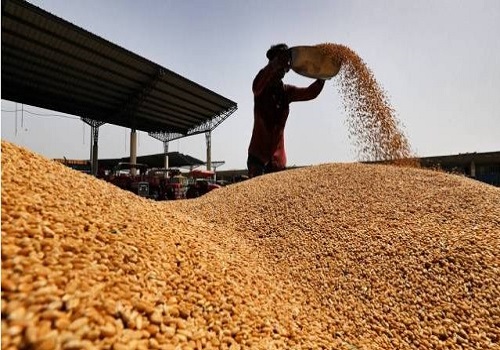Kharif Sowing Jumps 10% as Monsoon Covers India by Amit Gupta, Kedia Advisory

India’s kharif sowing has surged by over 10% to 137.84 lakh hectares as of June 20, aided by a strong revival of the monsoon post-June 15. Paddy and pulse acreage have seen significant growth, especially moong and urad, while oilseeds like groundnut and soyabean show a marginal decline. Pulses rose 42% YoY while cotton and coarse cereals also recorded strong gains. Early sowing is expected to benefit millet crops. However, the oilseed sector remains a concern despite the Oilseeds Mission. The sowing momentum is expected to increase further as rains reach more parts of north India.
Key Highlights
* Kharif sowing jumps 10% YoY to 137.84 lakh hectares.
* Paddy area surges 58%; pulses sowing up 42% YoY.
* Coarse cereals, maize, bajra and jowar see strong acreage gains.
* Oilseeds sowing slips 2% despite government’s focused mission.
* Cotton acreage grows by 7%, jute and mesta decline.
Kharif crop sowing across India has seen a robust pickup, with total acreage increasing by 10% to 137.84 lakh hectares as of June 20, from 124.88 lh a year ago. This sharp rise comes on the back of a revived southwest monsoon, which began covering most parts of the country post-June 15. The improvement in rainfall has triggered a surge in sowing activities, with nearly 50 lakh hectares sown in just the past week, significantly higher than the 15 lh covered the week prior.
In terms of price-supporting developments, paddy acreage saw a substantial 58% increase to 13.22 lh from 8.37 lh last year, boosting market sentiment around rice procurement and supply. Pulses sowing has jumped 42%, driven by higher coverage of urad (1.39 lh vs 0.62 lh) and moong (4.43 lh vs 2.67 lh). Meanwhile, coarse cereals like bajra and jowar recorded increases of 37% and 68% respectively, raising hopes for improved yields and stronger rural demand.
However, oilseeds present a worrying trend. Soyabean and groundnut acreage have both declined marginally, despite the launch of the Oilseeds Mission in 2024. Soyabean fell to 3.07 lh from 3.12 lh, while groundnut slipped to 1.78 lh from 1.91 lh. This drop could limit gains in domestic edible oil production and keep prices firm.
Cotton, another major kharif crop, saw a 7% rise in coverage to 31.25 lh. Jute and mesta, however, declined by 3% to 5.46 lh.
As the monsoon extends into northern regions, sowing momentum is expected to rise further, supporting overall rural economic activity.
Finally
A strong start to kharif sowing supports foodgrain prospects, though weak oilseed trends may pressure edible oil output unless corrective action boosts farmer participation soon.
Above views are of the author and not of the website kindly read disclaimer























